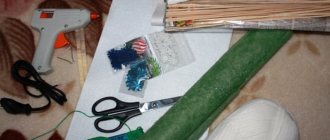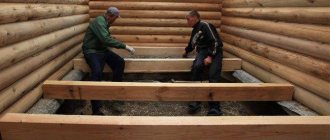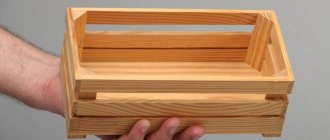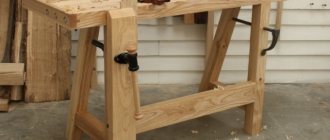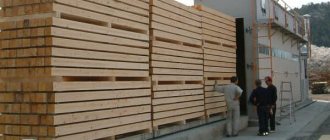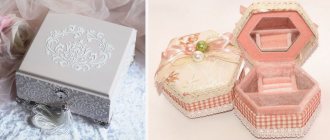Liquid wood is available for free sale, but folk craftsmen still came up with their own way of making liquid wood. DIY liquid tree.
The correct, scientific name for liquid wood is wood-polymer composite. It has excellent appearance and characteristics of wood. But the quality of such material is much higher. Liquid wood, just like regular wood, lends itself well to processing. It can be sawed, planed, processed and nailed. Read more about the production of liquid wood in the article
How wood plastic is made
Liquid wood or wood-polymer composite consists of a wood base encased in plastic. This new combination of ingredients has its benefits. From the wooden base, the product takes on impact resistance, elasticity, and environmental friendliness, and these raw materials are almost free here, since wood flour of any waste is used, from plastic - resistance to rust, mold, insects, flexibility, ease of processing. The polymer envelops the base and protects it from the main enemy - water. Plastic contained in WPC is 90% recycled plastic waste.
This is a unique material that is made from the following components:
- Filler made from crushed timber, which is a waste product from wood processing.
- Polyethylene, polyvinyl chloride and other plastic ingredients that bind it into one mass.
- Lubricators that repel water.
- Modifiers for strength that help maintain shape.
- Colorants for uniform and bright coloring.
- A foaming agent for a flat and smooth surface, at the same time reducing the weight of the finished bar.
- Biocides that prevent the formation of fungus and mold.
The essence of producing composite wood is to mix all the components in one container, after which the mass is heated to high temperatures. As a result, it connects at the molecular level and becomes strong. Then the mass is poured into the blanks under strong pressure and slowly cooled.
Comparative characteristics of briquettes
| Type of fuel | Calorific value, MJ/kg |
| Anthracite | 26,8-31,4 |
| Brown coal | 10,5-15,7 |
| Coal | 20,9-30,1 |
| Gas | 27 |
| Peat (humidity 20%) | 15,1 |
| Diesel fuel | 42,7 |
| Wood (humidity 40%) | 6-11 |
| Briquettes (from sawdust) | 16-29,5 |
Each type of briquettes has its own characteristics and advantages. And although all of them are excellent for heating in domestic conditions, it is still worth familiarizing yourself with their characteristics in more detail in order to choose the best option.
Forms of fuel briquettes
Wood briquettes
This type of briquettes is obtained by pressing various wood waste - dead wood, sawdust, shavings, substandard wood. Before pressing, the waste is heated to a certain temperature, as a result of which an adhesive substance, lignin, is released from the cells. Thanks to lignin, briquettes acquire high strength and retain their shape during transportation and storage.
Wood briquettes
The advantages of briquettes over solid wood are obvious:
- the density of briquettes is constant and amounts to 1240 kg/m³, the density of wood depends on the species and ranges from 150-1280 kg/m³;
- maximum humidity of briquettes is 10%, wood – from 20 to 60%;
- when burning a briquette, the volume of ash is 1% of the total mass, wood - 5%;
- when burning, a briquette emits 4400 kcal/kg, wood - 2930 kcal/kg.
In addition, wood briquettes have other advantages:
- pressed wood does not spark when burning and emits very little smoke;
- a constant temperature is maintained in the boiler;
- briquette burning time 4 hours;
- the coals remaining after combustion are excellent for cooking over an open fire;
- the correct shape of the briquettes simplifies their transportation and storage.
Such fuel is sold not in cubic meters, like wood, but in kilograms, which is much more profitable.
Prices for Eurofirewood Briquettes
Eurofirewood Pini-kay
Coal briquettes
Coal briquettes
This type of briquettes is obtained from screening out coal. First, the screenings are crushed, mixed with a binder, and then compressed under high pressure.
The main properties of such fuel:
- coal briquettes do not smoke;
- do not emit carbon monoxide;
- burning time in conventional boilers is from 5 to 7 hours, with controlled air supply – 10 hours;
- suitable for use in domestic conditions;
- have a compact shape;
- when burning they release 5200k/cal and maintain a constant temperature;
- maximum ash volume – 28%;
- have a long shelf life.
Coal briquettes are the most optimal fuel in harsh winters, when pressure drops in domestic gas systems due to low temperatures. Briquettes burn at any temperature, the main thing is that there is a constant flow of air.
Prices for WEBER coal briquettes
WEBER coal briquettes
Peat briquettes
Peat briquettes
To make briquettes, peat is dried, heated and pressed under high pressure. The result is neat, light, dark-colored bricks. With an adjustable air supply, peat briquettes maintain the temperature for 10 hours, which is very convenient for heating the house at night.
Basic properties:
- suitable for all types of ovens;
- heat transfer is 5500-5700 kcal/kg;
- ash volume 1% of the total volume of the briquette;
- affordable price;
- minimum amount of impurities in the composition.
The ash that remains after fuel combustion can be used as an effective lime and phosphate fertilizer. For many owners of private households, this factor is decisive when choosing heating briquettes. Since peat is a flammable substance, it should be stored at a safe distance from open fire and heating devices. Even dust spilled from the packaging can ignite and cause a fire, so briquettes must be handled correctly.
Husk briquettes
Husk briquettes
Sunflower husks, buckwheat and rice husks, rye waste, oats and even straw are widely used to make fuel briquettes. The most common are briquettes made from sunflower husks, since the production of oil leaves a large percentage of waste. The maximum moisture content of husks for pressing is 8%, which increases heat transfer and reduces combustion time.
Sunflower briquettes
Specifications:
- briquette density is 1.2 t/m³;
- heat transfer – 5200 kcal/kg;
- ash volume from 2.7 to 4.5%.
Additional benefits:
- absence of harmful impurities;
- affordable price;
- long burning time;
- ease of storage and transportation.
Properties of wood plastic
WPC simultaneously combines the best properties of polymer and wood. It is endowed with the color and smell of natural raw materials. This material has many distinctive characteristics that bring the product to the forefront. The demand for it is only growing, its distinctive features:
- similar to natural wood, but much better in quality,
- environmentally friendly and safe product without chemical impurities,
- not afraid of mechanical damage,
- ideally preserves the structure during temperature fluctuations from -50 to + 180 degrees,
- is not afraid of insects and is not susceptible to mold and rot,
- no need for painting or additional maintenance,
- not afraid of ultraviolet radiation,
- does not change structure and color when exposed to alkalis and acids,
- it is permissible to process construction tools like ordinary timber,
- Thanks to the polymer in the composition, the material can be heated and given the desired shape.
Advantages and disadvantages of building materials
Composite wood has become widespread among buyers. It combines the best qualities of natural raw materials and polymer resistance to mechanical damage.
If we compare the wood-polymer composite with natural components, it has several advantages:
- excellent moisture-resistant properties,
- resistant to temperature changes in the range from +180 to –50 degrees,
- withstands mechanical stress,
- mold does not form, is not damaged by insects due to antibacterial components,
- easy and quick installation,
- no need to varnish or paint, easy to clean,
- durability, lasts more than 25 years,
- takes on a variety of shapes
- presented in a wide range of colors,
- resistant to aggressive detergents,
- recyclable,
- It costs much less than natural raw materials, but is not inferior in quality.
Disadvantages of wood plastic:
- cannot be installed in places with high humidity and elevated temperatures,
- additional ventilation will be required.
Types of composite
Liquid wood is distinguished:
- Solid, withstanding enormous loads and mechanical damage. This type of liquid wood floor is ideal for rooms with high traffic loads.
- Hollow, characterized by low weight.
It should be noted that the type of wood composite joint can also be different:
- With seams that require installation of boards with a gap of 3-5 mm. Fastening of products is carried out using metal or plastic clamps.
- Seamless, creating a solid monolithic surface. The planks are attached using self-tapping screws.
Of no less interest to the consumer should be a type of anti-slip coating, which can be:
- Treated with metal brushes, due to which the material ages artificially;
- Sanded, that is, treated with emery or abrasive mesh;
- Embossed;
- Co-extrusion, based on the creation of the front part of the planks from a heavy-duty composition. The structuring of the material occurs during direct extrusion of products.
- Co-extrusion with deep embossing, allowing you to recreate the texture of valuable wood species.
Areas of use of liquid wood
The scope of application of wood polymer is gradually expanding. It is used in the production of the following products.
- Double-layer parquet. The size of such tiles is 3x3 meters, thickness from 25 to 55 mm. The first layer is a polymer, and the second is a wooden base, which is attached to the substrate with small screws. This type of parquet is used to cover a garden plot and an open terrace.
- Siding for the exterior of a house.
- Terrace board or decking. It is suitable for floors and car parking, and has found application in lining marinas, ship decks and piers.
This innovative building material is used in the design of residential and public premises and construction. This coating will not wear off, crack, chip, or mold from rain and snow. Wood-plastic can be used to make blanks for furniture that can withstand heavy loads.
Wood in combination with plastic goes well with brickwork, plasterboard and concrete.
Selection of WPC products
Before you buy this product, you need to know how to choose it correctly, otherwise there is a possibility of purchasing a low-quality product. What to look for when purchasing:
- If there are light particles on the board, then the composition contains bad wood dust that is not crushed enough. It does not have good moisture-resistant properties; water will gradually accumulate on the surface and destroy the product.
- When purchasing a wood-polymer composite, in addition to the shade, you need to pay attention to the texture. Wood polymer that is too polished and shiny is not suitable for flooring because it is very slippery.
- The color indicates the good or low quality of wood plastic. If the composition is poorly mixed during production, then streaks, spots, and uneven coloring appear on the surface.
- Wood plastic will be of high quality if hardwood flour is used in the manufacturing process. Coniferous flour makes the product less stable and increases its flammability.
When purchasing, you should give preference to well-known manufacturers.
What to look for when purchasing
When choosing liquid wood, first of all, you should know that the composition of wood flour is not so important for the technical characteristics, but a number of properties of products depend on the polymer.
Thus, polyethylene polymer has a lower cost, however, it cannot boast of excellent light resistance. But PVC polymer is considered the most durable. It is light-resistant, temperature- and fire-resistant.
In addition, the use of liquid wood for various purposes involves the use of a material with certain proportions of wood flour and polymer.
For example, a 2:1 ratio of sawdust and polymer, respectively, indicates a large amount of fibrous part, which tends to swell from moisture, which significantly reduces the service life of the material.
The advantage of such products is their beautiful texture and very pleasant corrugated texture.
The proportions of wood shavings to polymer as 2:3 indicate the unpresentability of the boards, reminiscent of ordinary plastic.
Liquid wood material with such a ratio of the main components cannot be used for flooring, since it has a smooth and rather slippery surface.
The optimal ratio of wood and polymer is recognized to be 1:1. In this case, the products can boast of a beautiful texture, a rough front side, and other first-class characteristics.
Without relying on the type of connections and the method of refining the front side, it is advisable to pay attention to:
- The height and number of ribs - they determine the strength of composite products.
- Wall thickness. The thicker the wall, the more impact-resistant the board.
- Width of the board. Thicker material is faster and easier to install. In addition, they require fewer fasteners.
When directly purchasing the material in a store, you should carefully examine the planks for the presence of light inclusions, indicating that the sawdust is not ground too finely, which will affect the moisture resistance of the subsequent decorative base.
Color is the second parameter that requires close attention. Stains, contrasting areas and careless transitions from one shade to another indicate poorly mixed sawdust with polymer.
This, of course, will not affect the technical characteristics, but the appearance of the boards will suffer significantly.
Another condition for the quality factor of WPC is deciduous wood composite. It is deciduous sawdust that can provide excellent moisture, heat and light resistance of the material. The use of pine flour is the key to obtaining unstable and fire hazardous products.
How to make composite wood yourself
It happens that you have to repair furniture made of chipboard at home, or the parquet tiles are cracked, the laminate has crumbled, then wood-plastic will come to the rescue. It’s not difficult to make it yourself; for this you will need:
- sawdust,
- PVA glue.
Master class on making wood polymer with your own hands:
- Grind the sawdust into flour; this works especially well in a regular coffee grinder.
- Mix wood dust with glue to a paste-like consistency.
- Choose the appropriate color of dye and squeeze it into the mass. Select the color for the water-based emulsion.
- Cover the damaged area and wait until it dries completely, then sand it with sandpaper.
In this simple way you can reanimate broken and damaged furniture.
Wood plastic is an excellent alternative to natural wood with improved characteristics, environmental friendliness and low cost. The product is widely used in the decoration of private houses, terraces and garden plots.
When does it make sense to produce fuel briquettes?
Mini-machine that makes briquettes.
Making fuel briquettes with your own hands, as shown in the video above, is only profitable when you have free sawdust. But even so, this event is not always advisable. For example, you have your own woodworking plant that needs to be heated. It’s just inconvenient to throw sawdust into the stove, and it doesn’t burn properly. In this case, it makes sense to buy a machine and stamp briquettes on it for your needs. The quality of the products will be acceptable, and you will save on heating costs. In this case, making briquettes manually is too troublesome, since a lot of energy is needed.
For heating a private home, homemade briquettes are also not the best option and here’s why:
- low quality due to the use of homemade presses;
- production requires a lot of time and effort.
This is if you don’t take into account the fact that you also need to make the press yourself. In addition, briquettes may not work out. An unpleasant surprise may await you after drying - the bricks sometimes simply fall apart. The point of self-production is when you want to make several cubes of briquettes to sometimes heat your dacha. But again, if you have your own sawdust and you are willing to spend several days on it.
